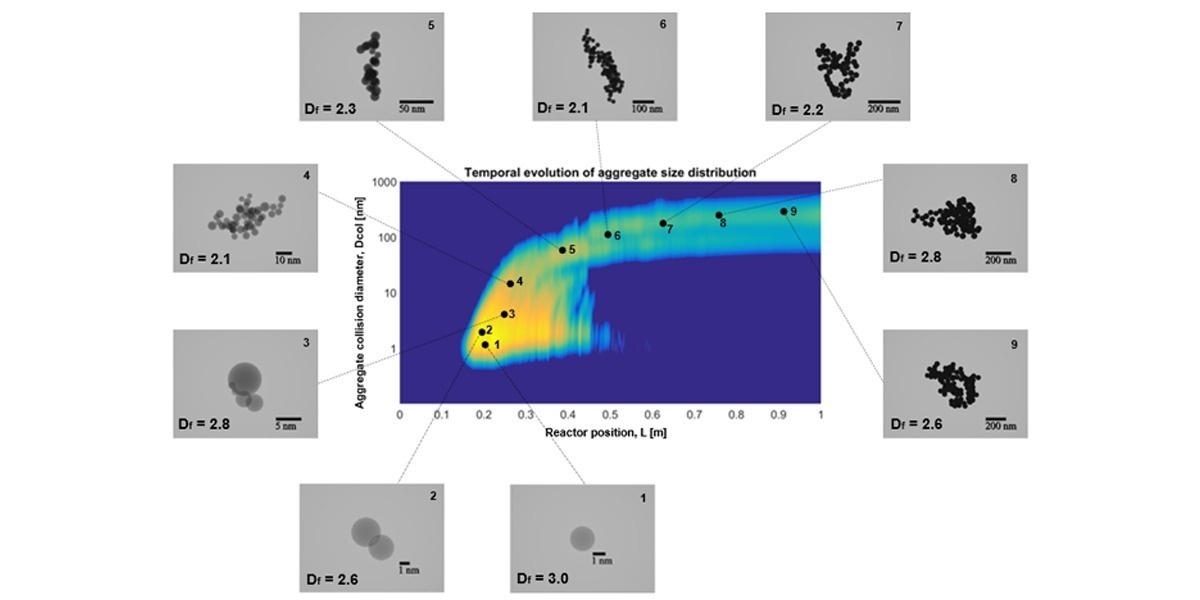Organic and inorganic materials with structure at nanoscale can exhibit unique mechanical, optical or electronic characteristics. These nanomaterials are applied in many areas of modern life, from the black toner in a laser printer and the white pigment in paint, to self-cleaning coatings on windows and reinforcing filler for tyres.
Understanding the mechanisms by which these particles are formed and grow will help us control their size, shape and composition in order to promote useful their properties.
We employ a variety of techniques to model the growth and morphology of nanoparticles. These are described in more detail in one of our user stories; we examine the process starting from the most fundamental level, in that quantum chemistry techniques are employed to determine the stable energy states of chemical species associated with the gas-phase chemistry. By performing these calculations, we can gain insight into the processes which lead to nanoparticle formation.
Once the smallest particles have been formed and are in a stable state in the system, growth systems take over. These range from the coagulation of particles and surface growth processes (gas-phase chemical species reacting on the surface of the particles), to restructuring processes also known as sintering – where the surface area of the particle reduces towards that of a perfect sphere.
Based on our modelling capabilities we can determine the sizes and shapes of the full population of particles. The Monte Carlo techniques employed to solve the underlying population balance equation have allowed us to describe the particles in such detail that we are now able to construct a 3-dimensional structure of individual particles.

See some of our User Stories
- Carbon Black: Morphology and fractal dimension of carbon black aggregates
- Zinc Oxide: Gas phase synthesis in DC plasma reactor
- Silicon: Hot-wall reactor for synthesis of Si nanoparticles from Silane
- Titania, Silver-Silica: Ab-initio modelling of nanoparticle systems
- Silicon Nitride and carbon nanotubes: Chemical vapour deposition (CVD)
How can we help?
- Detailed population balance models describing formation of nanoparticles
- Detailed chemistry describing gas phase to particle transition
- Dynamics of nanoparticles
- Nanoparticle synthesis and manufacturing processes
- Combustion generated and flame synthesised nanoparticles
